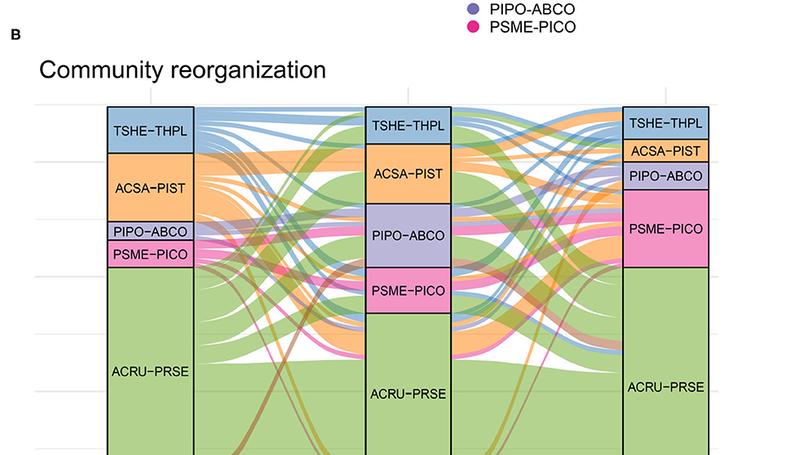Research Goals
Global seed supply is too poorly understood to even speculate on its contribution to the regeneration of forests that are increasingly lost to disturbance, climate change, and extensive human management. To address this knowledge gap, the MASTIF project was established through collaborations with over 100 international researchers. The MASTIF project, funded by Nation Science Foundation (NSF) to PI Jim Clark since 1990s, has assimilated seed production data for 12.1 million tree-years in more than 1000 species from all vegetated continents. Currently, PI Qiu and Clark are expanding these efforts by linking seed production to seedling recruits and synthesizing satellite and airborne remote sensing with the MASTIF network. This new project, funded by the National Aeronautics and Space Administration (NASA) from 2024 to 2028, invovles collaboration with the Pennsylvania Department of Conservation and Natural Resources (PA DCNR). As a key partner and end-user, PA DCNR will contribute in-kind resources and computing support to aid in the development of decision-making tools. So far, we have addressed the following questions:
- Tree size and age effects: does tree fecundity decline as tree grows larger and older (Qiu et al., 2021a)?
- Map of life and traits: are there limits to reproductive potential whereby species sacrifice seed size in order to produce more seeds, a size-numbers tradeoff (Qiu et al., 2022)?
- Soil effects: will access to resources mediate the limits to reproduction (Qiu et al., 2022)?
- Masting syndrome: what are the causes and consequences of mast seeding at a global scale (Qiu et al., 2023)?
- Canopy characteristics: how will tree fecundity respond to canopy nutrients, including N, P, K, Ca, and Mg (Qiu et al., 2024)?
- Climate effects: how does individual fecundity change along the latitude gradient from dry tundra to wet tropics (Journe et al., 2022)?
- Forest regeneration: do forest communities reorganize throughout the tree life stages including adult trees, fecundity, and seedling recruitment (Qiu et al., 2021b)?
I have featured six main published papers listed in the following. There are a couple of papers in preparation and in review, with results available from contacting the PI Qiu.
Publications
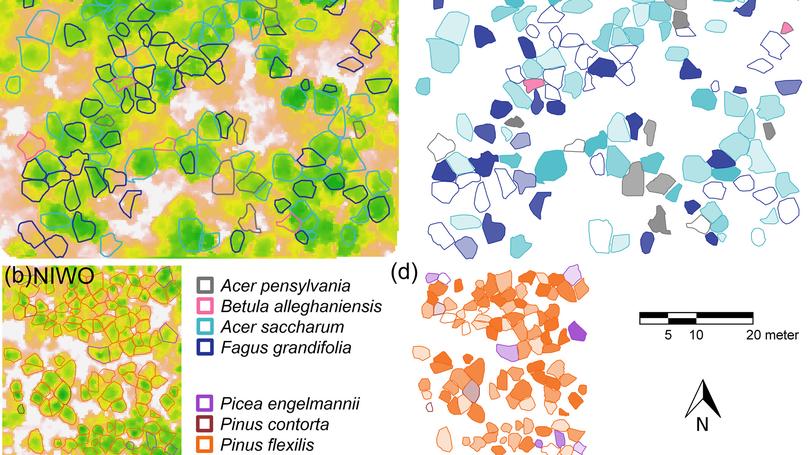
This paper reveals the effects of remotely sensed nutrient supply on forest reproduction across the United States. Consistent with our previous findings, we found increasing phosphorous is assocaited with low seed production at both species and landscape level.
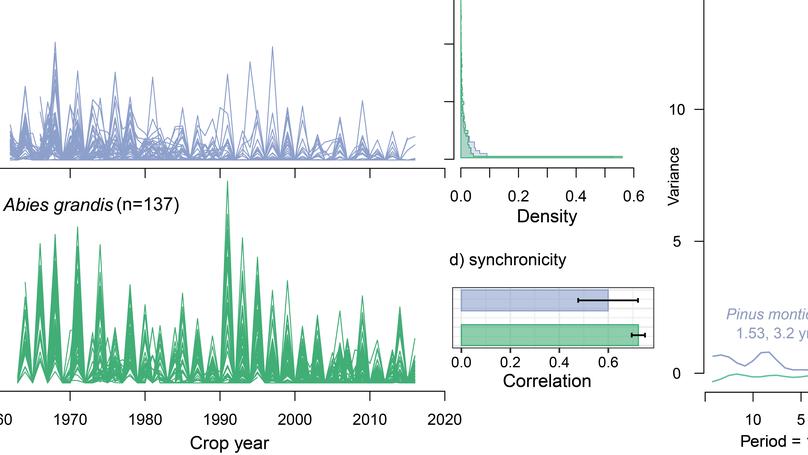
This paper aims to understand the size-numbers trade-off in species seed production and how species traits have mediate the trade-off. The paper also reveals the effects of soil fertility on both individual and community fecundity at a global scale.
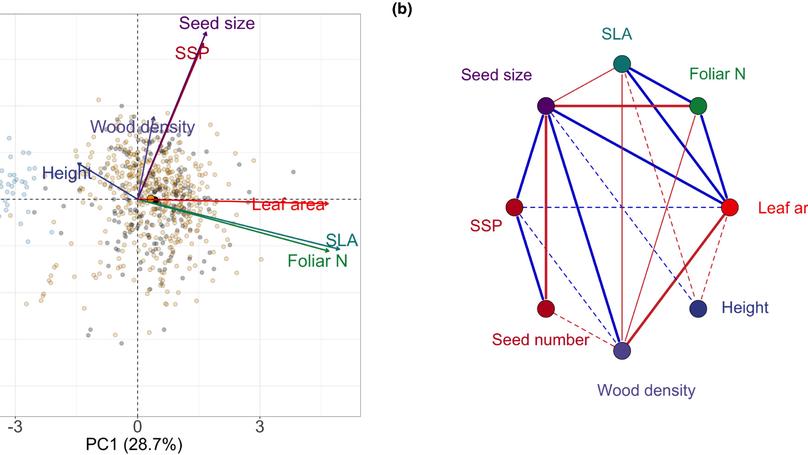
This paper confirmed the seed number-size trade-off across the trait spectrum based on the Species Seed Production (SSP) developed in Qiu et al. (2022), Nature Communications
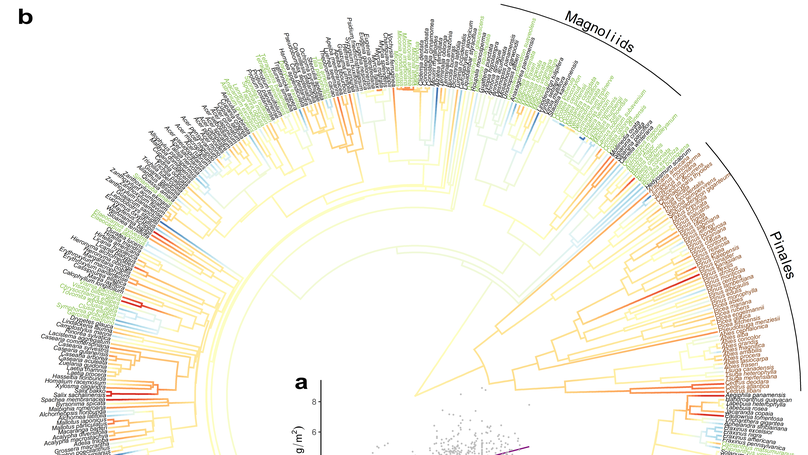
This paper aims to understand the size-numbers trade-off in species seed production and how species traits have mediate the trade-off. The paper also reveals the effects of soil fertility on both individual and community fecundity at a global scale.
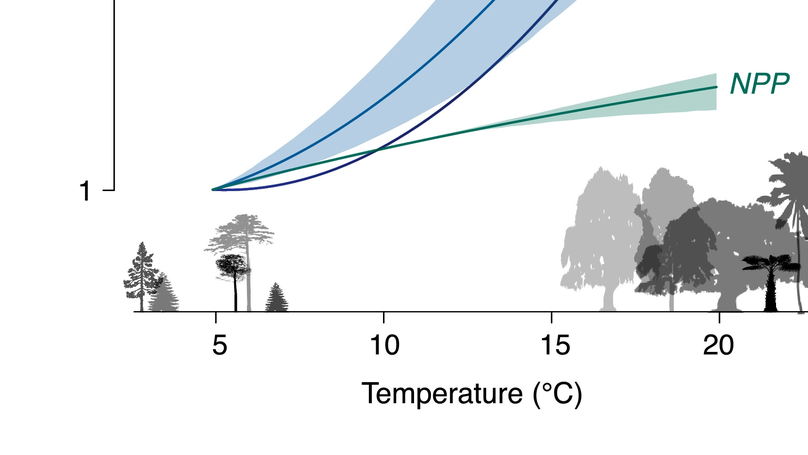
The orders of magnitude of differences in seed production from dry tundra to tropical rainforest beyond which can be explained by the Net Primary Production (NPP).
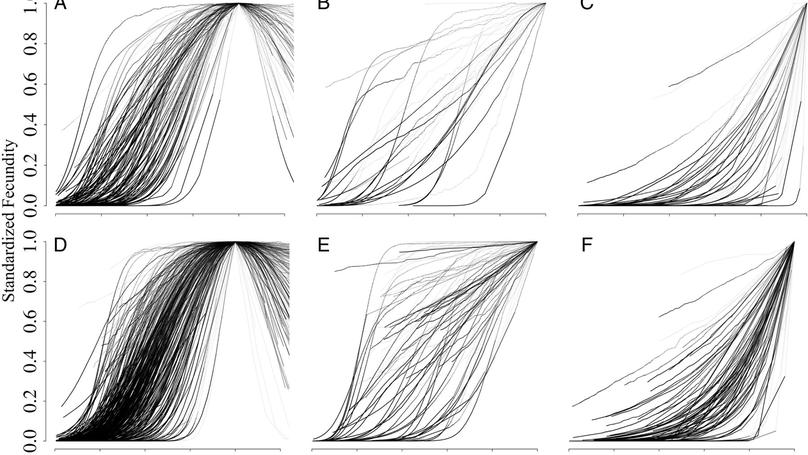
A global analysis finds that fecundity decline in large trees is pervasive, consistent with physiological decline, thus providing new evidence for tree senescence. For the 20% of species not showing fecundity declines, this lack of evidence was linked not to specific species groups, but rather to lack of large trees in the data.
